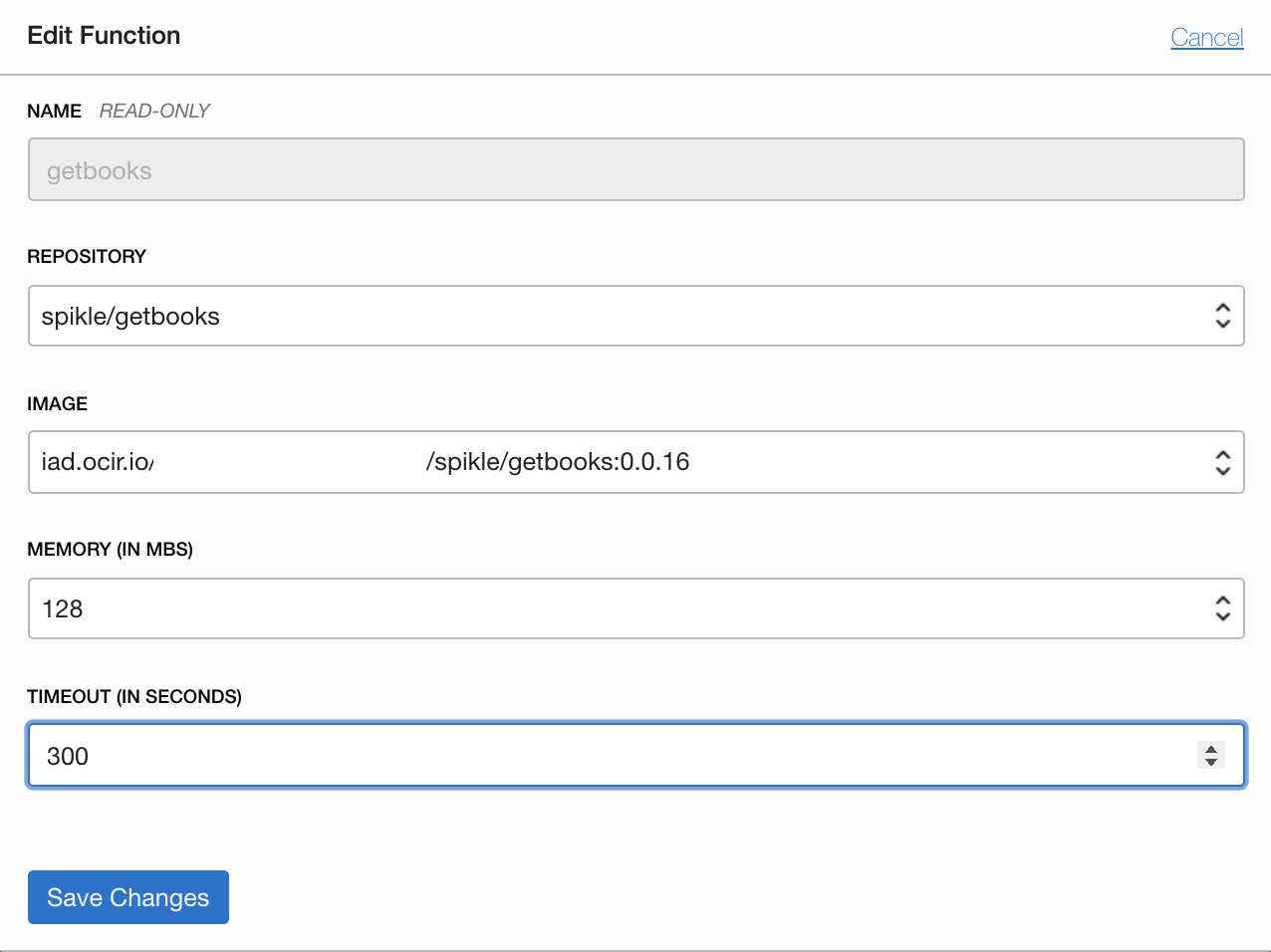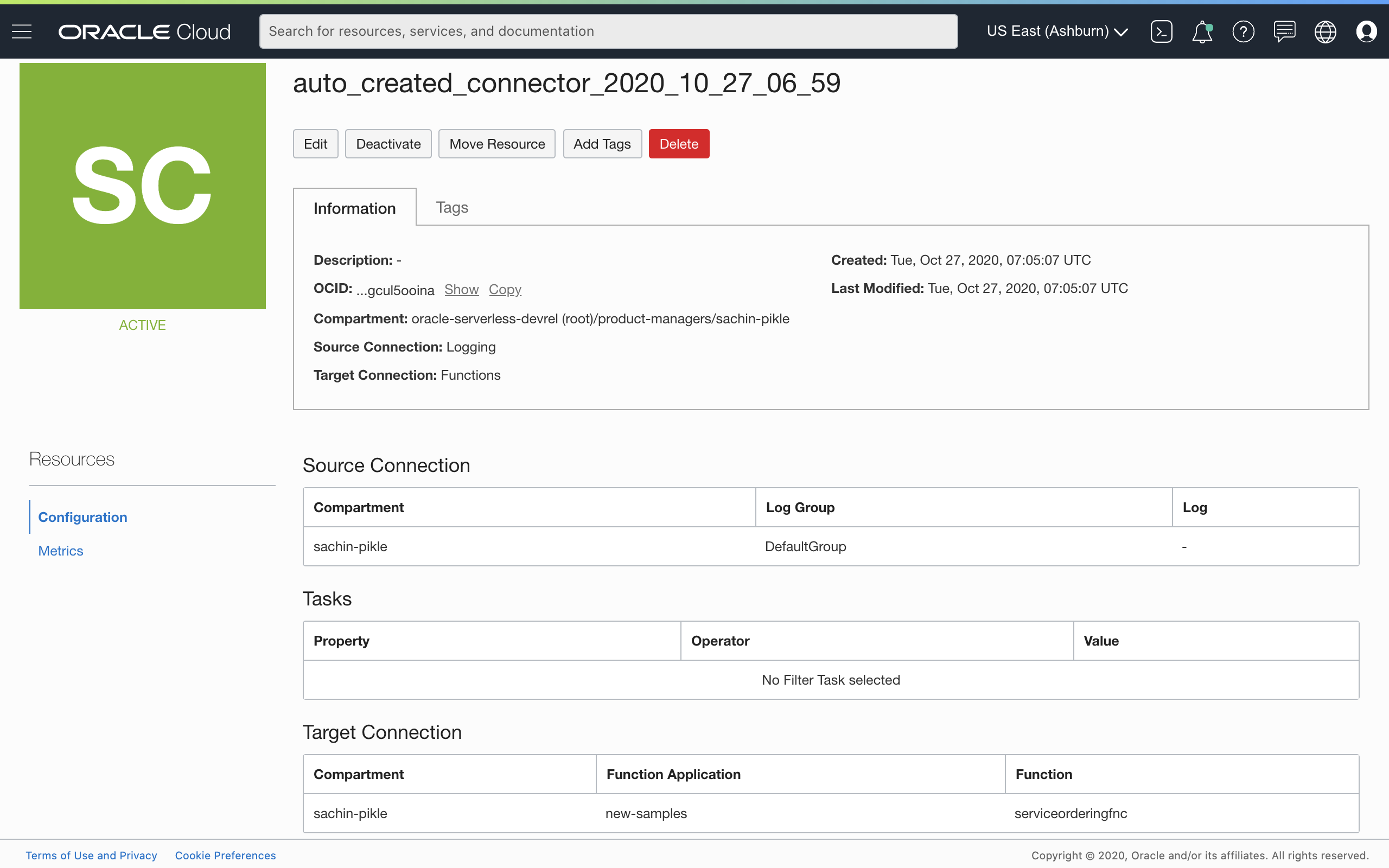Oracle Functions is a serverless platform that lets you create, run, and scale business logic without managing any infrastructure. Today, we’re pleased to announce some key enhancements to Functions to make it easy for you to use it in more use cases:
- Longer-running functions, up to 5 minutes
- Increased maximum number of functions and applications
- Improved logging with Oracle Cloud Infrastructure Logging
- Log-triggered functions using Oracle Cloud Infrastructure Service Connector Hub
Longer-running functions, up to 5 minutes
You can now run workloads that need up to 5 minutes of function run time. Previously, this time was limited to 2 minutes. This increase will help customers who need the extra processing time for use cases such as:
- Fetching more data from databases, APIs, and third-party systems
- Importing more data with extract, transform, load (ETL) functions
- Running synthetic monitoring tests
- Performing memory heap analysis
- Processing batches of log data
To use this feature, you can set the maximum function timeout value up to 300 seconds. We recommend that you use a timeout value as close to your actual need as possible.

Figure 1: Setting a timeout for a function
Increased maximum number of functions and applications
Customers with Universal Credits (annual or monthly) can now create up to 500 functions in each region. Previously, the limit was 20 functions per region. We’ve also doubled the maximum number of applications, from 10 per region to 20 per region.
Customers with Pay as You Go or Trial accounts can now create up to 50 functions per region. Previously, this limit was also 20 functions per region.
These limits are soft limits; you can submit a request for higher limits if you need more capacity. We recommend including multiple functions in a single application for optimal performance.
Improved logging with the Logging service
The Logging service provides a unified view of all your logs across multiple services. Oracle Cloud Infrastructure services like Functions, API Gateway, Events, and Object Storage have native integration with the Logging service. This service lets you easily ingest, search, analyze, and export logs from a single interface.
You can now send your function logs to the Logging service. To do so, enable logging by using the toggle switch in the Functions section of the Console.

Figure 2: Logging enabled for an application
Remember to add some print statements to your function code. For example:
- For Node.js:
console.log('Entering Hello Node.js function'); - For Java:
System.out.println("Entering Java Hello World Function"); - For Go:
fmt.Println("Entering Hello Go function")
When your function is invoked, the logs appear in the Logging service within minutes. To view the log data, click the Log Name or Log Group link and use the Logging Search feature. You can search and filter your logs, and quickly identify critical events across multiple logs by using the Explore tab.

Figure 3: Search, filter, and explore logs
For more information, see Announcing the general availability of Oracle Cloud Infrastructure Logging and Storing and Viewing Function Logs.
Log-triggered functions using Service Connector Hub
Service Connector Hub is a free service that helps you filter and move data from a source such as Logging to a destination such as Functions, Object Storage, or Streaming. Now, you can trigger functions by using data flowing into Service Connector Hub.
Log-triggered functions help you implement use cases such as analyzing logs and exporting them to third-party monitoring tools, creating and updating tickets in systems like Jira and Service Cloud, and more.

Figure 4: Use a service connector to trigger functions
For more information, see Oracle Cloud Infrastructure Service Connector Hub now generally available and Send Log Data to an Autonomous Database.
Next steps
To learn more about Oracle Functions, see the quick start guide, samples repo, and documentation. And if you haven’t tried Oracle Cloud Infrastructure yet, try it for free today.
